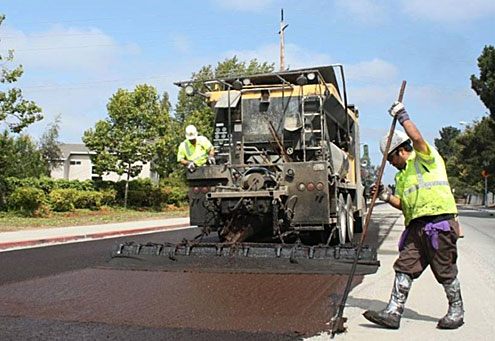By Zach Friend

The RTC, on which I serve as a member, has been looking at ways to provide improved local funding for transportation needs including roads, the highway, bus and pedestrian and para-transit. With significant cuts from state and federal funding sources the RTC has been working on ways to make our county a “self-help” county.
Currently, over 80 percent of California’s population live in self-help counties, which means they have a local, secure, and independent transportation funding mechanism.
This local funding can be used to leverage additional state, federal and grant funding. In fact, as funding has been reduced from state and federal sources it’s common that the funding that’s left requires a local funding match – in a sense advantaging areas with their own self-help funding mechanism. The funding proposal is for a one-half cent sales tax measure, which includes citizen oversight, independent audits, and strict financial accounting requirements.
What does the measure contain?
The aim of the RTC measure is to include a balanced mix of projects. Projects would be geographically dispersed and focus on everything from road and highway improvements to bus, pedestrian, bike and school safety investments. The proposed projects and services would be funded just from this funding stream and most would not be possible absent a local funding mechanism.
The RTC developed the ballot measure over the last two years based on extensive public input from evening community meetings, workshops, public hearings at the RTC meetings, surveys and more. As a result, the measure proposes the following:
Neighborhood Projects — The largest amount of the measure (30% ~ $5M/yr.)* goes toward neighborhood projects. Specifically, this element will maintain local streets and roads and fund safety improvements for children walking and biking to school. In our district we are aiming to construct new sidewalks and put a dent in the significant amount of deferred maintenance on our local roads – including pothole repair, resurfacing and more.
Highway Corridors — The second largest amount (25% ~ $4.1M/yr.)* of the measure targets Highway 1. Funding will create auxiliary lanes between 41st Ave to Soquel Dr, Bay/Porter to Park Ave, and Park Ave to State Park. In addition, two bicycle/pedestrian crossings including finishing the long-awaited crossing at Mar Vista (to help connect Seacliff to the school and Soquel). Traveler information including real-time traffic conditions and safety programs for Highway 17 are other items funded.
Mobility Access — One of the key funding elements of the measure (20% ~ $3.3M/yr.)* is for mobility access services to help maintain senior and disabled transit service. This funding includes Santa Cruz METRO’s ParaCruz service and Community Bridges Lift Line service as well as general funding for the METRO (bus) system.
Coastal Rail Trail — Funding to construct, operate and maintain the bike and pedestrian trail along the rail corridor (17% ~ $2.8/yr.)*.
Rail Corridor — This is the smallest portion (8% ~ $1.3)* of the measure and it goes toward repair and maintenance of the corridor, including drainage improvements and vegetation/graffiti/trash control as well as an environmental analysis of all possible future public transit (rail and non-rail) uses of the corridor. No new passenger rail service is funded by the measure.
This provides an overview of the November measure. As always, I’d love to hear your thoughts and answer any questions you may have. Please feel free to call me at 454-2200.
•••
*Estimates from the Regional Transportation Commission based on funding total of ~ $16.6M/yr. from the one-half cent sales tax.